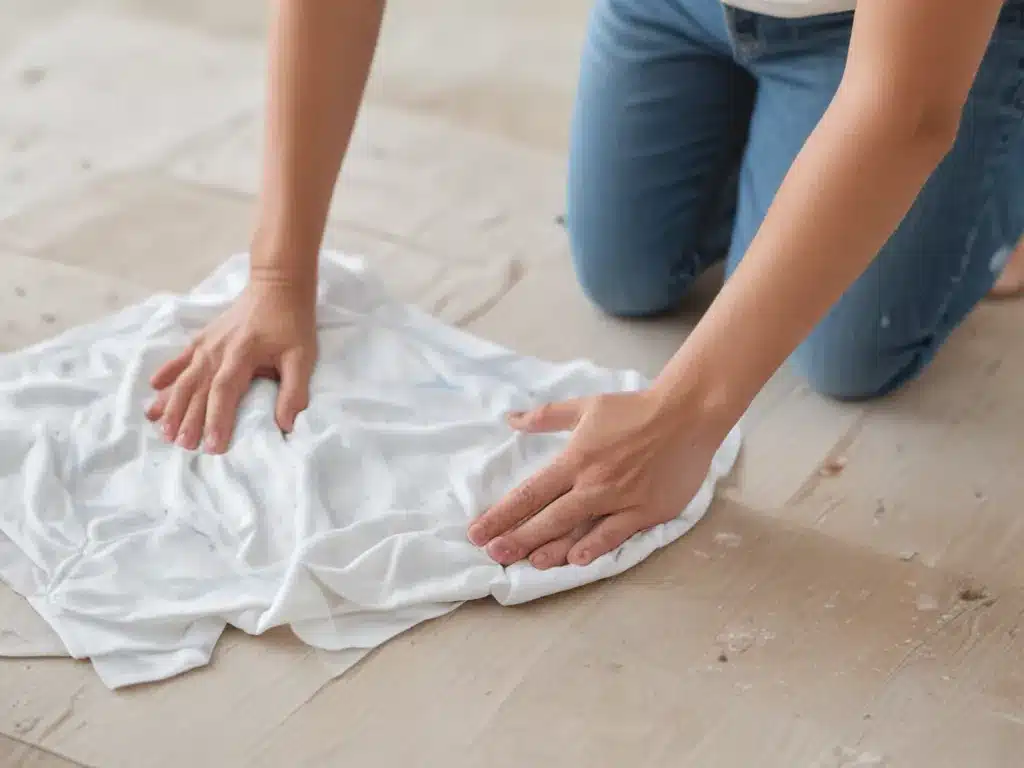Introduction
As a busy person, I often find myself dealing with unexpected stains on my clothes, furniture, or carpets. Wine spills, grease splatters, mud tracks – you name it, I’ve tried to get it out. But many stains are stubborn, and no amount of scrubbing, dabbing, or spot-treating seems to do the trick.
Recently, however, I stumbled upon a surprising household item that makes short work of even the toughest stains. White vinegar – yes, regular old distilled white vinegar! – has become my go-to stain removal product.
In this article, I’ll share how white vinegar removes stains, explain why it works so well, and provide tips for using it on different surfaces. By the end, you’ll be eager to grab a bottle of vinegar and banish stains for good!
How White Vinegar Works on Stains
White vinegar, which is simply a diluted form of acetic acid, is mildly acidic with a pH of around 2-3. This acidity is the key to its stain-fighting prowess. Here’s a quick rundown of the science behind it:
-
Breaks down stain compounds – The acidic vinegar can break down stubborn compounds like fats, oils, and pigments that comprise difficult stains. This helps loosen the stain’s hold on the fabric or material.
-
Disrupts protein bonds – Vinegar separates bonded proteins that contribute to stains like blood, egg, and grass. The acid breaks the bonds apart.
-
Neutralizes alkalinity – Many stains leave an alkaline residue. Since vinegar is acidic, it can neutralize this alkalinity and make the stain more water-soluble.
-
Acts as solvent – Acetic acid can dissolve residue from stains that soap and water alone can’t conquer. It provides a solvent effect to lift the stain.
Thanks to these chemical reactions, white vinegar is a surprisingly powerful stain fighter!
Why Vinegar Beats Other Cleaners
Besides the science, there are a few other advantages that make white vinegar a superior stain remover compared to many commercial products:
-
Natural and non-toxic – Vinegar is all-natural and safe to use around kids and pets, unlike harsh bleach or chemical solvents.
-
Removes odors – As a bonus, vinegar neutralizes unpleasant odors that linger even after the stain is gone. No more musty carpet or clothes smells!
-
Budget-friendly – At just a few dollars per gallon jug, vinegar provides stain-fighting power at a fraction of the cost of specialty cleaners.
-
Compatible with surfaces – Diluted vinegar is safe for most washable fabrics, finished wood, tile and sealed stone. Many cleaners can damage surfaces.
With these benefits over other products, it’s easy to see why vinegar deserves a permanent spot in your green cleaning toolkit!
Tips for Removing Stains with Vinegar
Now that you know why vinegar works so wonderfully, let’s get practical. Here are helpful guidelines for tackling various stains the vinegar way:
Grease, Oil, Makeup Stains on Fabric
- Mix 1 part vinegar with 1 part dish soap in a spray bottle. Spray liberally on stain.
- Let solution sit 5-10 minutes to penetrate stain.
- Rinse with cold water and wash normally. The vinegar and soap team will pull out any oily residue so the stain doesn’t set.
Coffee, Tea, Fruit Stains on Fabric
- Fill a bucket with 1 quart warm water and 1/2 cup white vinegar.
- Soak the stained item for 30 minutes, longer for stronger stains. The acidic vinegar will break down the stain compounds.
- Wash as usual with detergent. Adding 1 cup vinegar to the wash will help further eliminate residue.
- For delicates, dab stains directly with a vinegar-dampened cloth rather than soaking.
Red Wine Stains on Fabric or Carpet
- Blot stains immediately with a towel. Avoid vigorous rubbing which can drive the stain deeper.
- Spray full-strength vinegar directly on the wine stain.
- If on carpet, place an absorbent pad beneath and gently blot stain. On fabric, hold the backside of the stain upward.
- Rinse the fabric under cold water or thoroughly extract carpet area with a wet/dry vacuum.
- Repeat if needed for stubborn stains. Vinegar should dissolve the tannins and pigments in the wine.
Mold & Mildew Stains in Bathroom or Shower
- Fill a spray bottle with undiluted white vinegar. Liberally spray problem areas, especially grout.
- Let sit 15-20 minutes so vinegar can kill mold, break down soap scum and remove hard water deposits. Scrub with a stiff brush if needed.
- Rinse clean with water. Repeat process weekly to prevent future mildew growth. The vinegar will sanitize and deodorize.
With the right vinegar technique, you can erase almost any stain woe. Keep a spray bottle handy for stain emergencies!
Conclusion
I’ll be the first to admit I was skeptical that mere vinegar could best the most difficult stains I encounter as a messy homeowner. But I’m now a total convert after seeing vinegar wipe out stain after stain with ease. It requires no harsh fumes or chemicals and costs just pennies per use.
So grab a bottle of distilled white vinegar and let it work its stain-removing magic in your home. With a little knowledge of vinegar’s chemical properties and the right application techniques, you can kiss stains goodbye for good. What stains will you banish with vinegar first?







